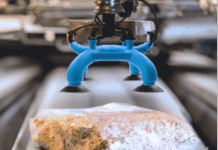We recently found out that the market for 3D printed food is expected to reach $425 million by 2025 – with customized chocolate and cakes the largest segments of the printed food market. Reality is, 3D food printing was first considered as an opportunity to create disruptive marketing opportunities to engage buyers at live events, or to deliver a highly customized and timely interaction with customers and consumers.
However, another scenario for this niche market reveals that its growth is likely to be affected by concerns that go beyond the aesthetic look of 3D printed food, concerns that are based on the way we currently consume food, concerns that should drive a positive change in our dietary habits.
In the latest Additive Talks session, we sat down with MeaTech’s Simon Fried and byFlow’s Nina Hoff to discuss the current trends surrounding 3D Food Printing.
The conversation below discusses:
- the various fabrication processes that can be leveraged to produce alternative food 3D printed products;
- the various groups that this growing market targets,
- the commercial routes to explore to make alternative food 3D printed products a viable product;
- the global food waste issue
- as well as the consumer perspective.
You may also want to check other topics related to MeaTech’s activities or byFlow’s activities.
Remember, you can post job opportunities in the AM Industry on 3D ADEPT Media free of charge or look for a job via our job board. Make sure to follow us on our social networks and subscribe to our weekly newsletter : Facebook, Twitter, LinkedIn & Instagram ! If you want to be featured in the next issue of our digital magazine or if you hear a story that needs to be heard, make sure you send it to contact@3dadept.com





